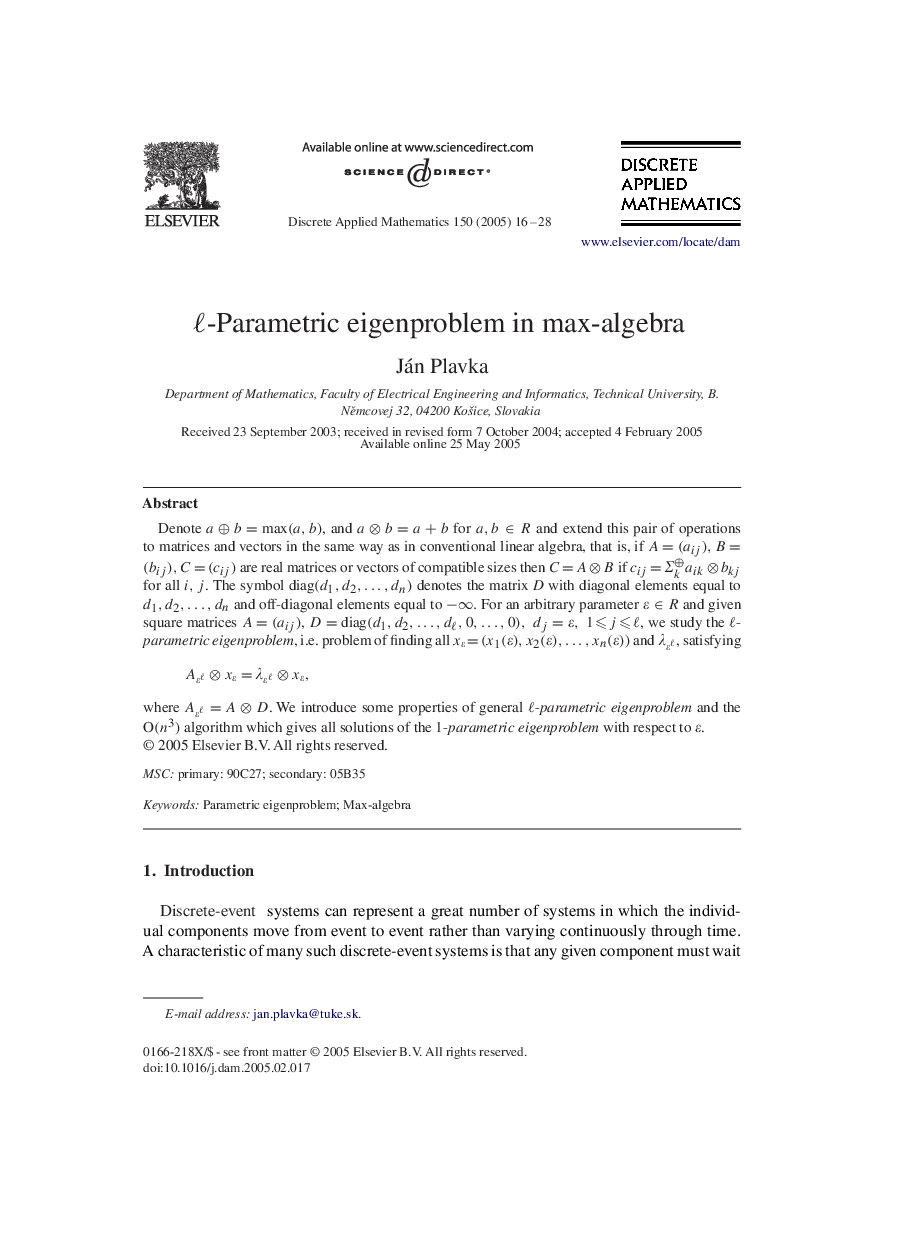| Article ID | Journal | Published Year | Pages | File Type |
|---|---|---|---|---|
| 9655153 | Discrete Applied Mathematics | 2005 | 13 Pages |
Abstract
Denote aâb=max(a,b), and aâb=a+b for a,bâR and extend this pair of operations to matrices and vectors in the same way as in conventional linear algebra, that is, if A=(aij),B=(bij),C=(cij) are real matrices or vectors of compatible sizes then C=AâB if cij=Σkâaikâbkj for all i,j. The symbol diag(d1,d2,â¦,dn) denotes the matrix D with diagonal elements equal to d1,d2,â¦,dn and off-diagonal elements equal to -â. For an arbitrary parameter εâR and given square matrices A=(aij), D=diag(d1,d2,â¦,dâ,0,â¦,0),dj=ε,1⩽j⩽â, we study the â-parametric eigenproblem, i.e. problem of finding all xε=(x1(ε),x2(ε),â¦,xn(ε)) and λεâ, satisfying Aεââxε=λεââxε,where Aεâ=AâD. We introduce some properties of general â-parametric eigenproblem and the O(n3) algorithm which gives all solutions of the 1-parametric eigenproblem with respect to ε.
Keywords
Related Topics
Physical Sciences and Engineering
Computer Science
Computational Theory and Mathematics
Authors
Ján Plavka,
